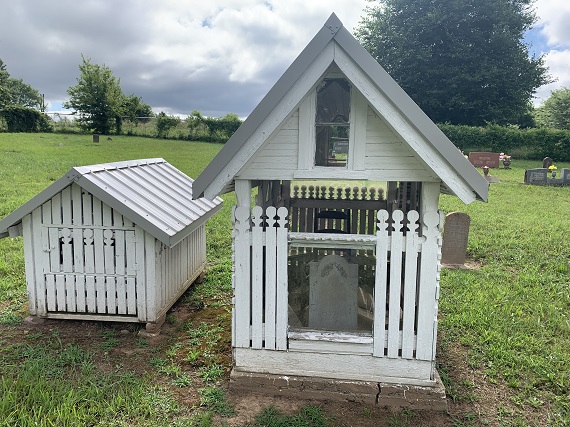Most all of us who were fortunate enough to know our Grandfather has experienced his love. It may be expressed in many ways, whether it be a spoken ‘Well done’ or an ‘I love you’, or by a physical ‘pat on the back’ or a hug. But most expressions of our Grandfather’s love are something we hold close, and will always remember. However, sometimes a Grandfather doesn’t get the chance to give one a physical touch, nor a kind word. This is where our story begins.
William Newton Christian was born on October 11, 1841. Though not much is known of his early life, when the War for Southern Independence came, he enlisted in Co. F of the 38th Arkansas Infantry, CSA on July 21st, 1862. He gave his residence as Evening Shade, Arkansas upon enlistment. Though history of this regiment seems to be a bit clouded, Company F was organized in Evening Shade in Lawrence County (which may explain his listing of Evening Shade as a residence). Though this company appears to be first organized as Co. G, 1st Arkansas Volunteer Rgt. at Evening Shade, on November 15th, 1861, William’s later enlistment (I believe) excludes him from this confusing ordeal.
William’s enlistment is a matter of debate; however, what he later endured is not.
After the war ended, William found himself in Newton County, Arkansas. He married Margret A. McFarlieu. Though we aren’t sure when they were married, it was likely post-war, when they both settled near what is now Hasty, Arkansas, and near the cemetery that is forever marked by William’s handiwork.
Infant mortality was a serious problem around the turn of the century. Few families escaped this ‘black mark.’ Loss of a child was not only a possibility, it was also fact of life to many families. In Newton County around the turn of the century, Williams’ daughter, Nancy, was no exception.
Nancy was wed to William Nathan Agee, with whom she had several children. Thankfully, most of them grew to adulthood. However, there were two who did not. In 1910, they gave birth to a stillborn son. He was buried in the Hasty (some call it the ‘Agee’) Cemetery.
Shortly after that, Nancy gave birth to another son whom they named ‘Guffrey’ on August 5th, 1912. Guffrey was a fighter, and held out and held all the promise of being a strong young man. However, sadly, he died on July 8th, 1914. He was not quite two years old. He, likewise, was buried in the Hasty Cemetery.
At this point, it would be just one more sad story, one that was repeated countlessly across the South. However, William would not have it that way.
William stood out in a way that, to this day, stands out amongst anyone who dares walk amongst the rows of Hasty Cemetery.
William used his hands to BUILD something. He knew his two grandchildren were worth more than gold, and he did something to memorialize it.
He constructed houses over their graves. They were small houses, of course, but ones that would keep the rain and wind off of the graves.
Whilst this would seem strange to the current reader, it was an old tradition at the time. It followed the Ozarks settlers from Tennessee, and held over (albeit very rarely) as an accepted tradition.
William hand cut and put up both houses over the graves. He fitted glass and even added doors, in case one of the graves may need cleaning. He built them strong and sturdy. He built them as a monument to lives that never were.
William built the larger house over Guffrey’s grave and fitted a door that could be opened from the outside. Through this door he put his chair; a split bottom one, locally made (likely built himself) and kept safe from the rain on top of his grandson’s grave.
William became a local legend for walking up from his home near the river and opening the door on Guffrey’s grave and taking out his chair.
He would sit, whittle, and be with his grandsons until evening. He would announce each day, ‘I’m going to go sit with the babies.’
William grew old in the shavings of sticks in his hands. He sat, night after night, in the shadow of the two houses he had built; a man who was old when they were constructed, and grew older still yet in the knowledge that they would be there long after he was gone.
William spent the latter part of his life with his family, but he never forgot the two grandchildren he lost.
He spent his twilight days in the growing shade of Hasty Cemetery, whittling slowly, as the shade approached.
William died on October 19th, 1919. He was buried directly behind Guffrey’s grave. His split bottom chair still resides inside Guffrey’s grave house to this day.








I absolutely love this story, Travis, thank you for all you do for our Arkansas families!!